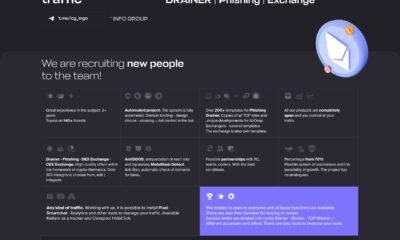Technology
Retiring legacy physical servers and moving to the cloud
Recently, there has been a shift from traditional, on-premises data centers to the cloud. Cloud computing offers many benefits, such as flexibility, scalability, and cost-efficiency. For companies still using legacy physical servers, the time has come to retire them and switch to the cloud.
Recently, there has been a shift from traditional, on-premises data centers to the cloud. Cloud computing offers many benefits, such as flexibility, scalability, and cost-efficiency. For companies still using legacy physical servers, the time has come to retire them and switch to the cloud.
Why are legacy systems still in use in some organizations?
There are a few reasons why some organizations continue to use legacy systems, even though newer, more modern alternatives are available. One reason is that these organizations may have invested heavily in the legacy system, and switching to a new system would be too costly. Another reason is that the legacy system may still meet the organization’s needs, even though it is not as efficient or up-to-date as newer systems. Finally, some organizations may resist change and prefer to stick with what they are familiar with.
What are some of the advantages of moving to the cloud?
Moving to the cloud has many advantages, including increased flexibility, scalability, and cost savings. Cloud computing can help organizations retire legacy physical servers and improve their overall IT infrastructure.
COSTS
One of the most significant advantages of moving to the cloud is that it can save money. Retiring your legacy physical servers means you no longer have to pay for their upkeep and maintenance. Additionally, you can take advantage of the pay-as-you-go model offered by most cloud providers, which can further reduce your costs.
MODERN TECHNICAL SPECIFICATIONS
The first thing to consider when modernizing your data center is what technology can offer in terms of performance. Newer servers are often faster and more powerful than their older counterparts. Investing in new servers is an excellent start if you want to improve your data center’s performance.
Another important consideration is energy efficiency. Newer servers are often much more energy efficient than older ones, saving you money on your power bill. If you’re looking to green your data center, investing in newer, more energy-efficient servers is a great way to do it.
Finally, you’ll want to consider your budget. Newer servers can be expensive, so you’ll need to ensure you have the funds to invest. If you’re unsure whether you can afford new servers, talk to your IT team or financial advisors to get a better idea of what’s possible.
If you’re considering retiring your legacy physical servers and moving to the cloud, there are a few things you need to keep in mind. First, consider what technology can offer in terms of performance and energy efficiency. Second, consider your budget and make sure you have the funds available to make the switch.
SECURITY
The cloud is a great way to retire your legacy physical servers. By moving to the cloud, you can take advantage of its security benefits. The cloud can help you keep your data safe and secure and can also help you comply with industry regulations.
USER EXPERIENCE
As someone who recently retired several legacy physical servers, I can attest that moving to the cloud can be a great experience. Not only does it save on hardware and energy costs, but it also frees up valuable space in your data center.
However, the most significant benefit of moving to the cloud is its increased flexibility and scalability. With a cloud-based infrastructure, you can easily add or remove capacity without worrying about physical limitations.
If you’re considering switching to the cloud, I highly recommend it. Just be sure to research and choose a reputable provider who can meet your specific needs.
Migrating legacy systems to the cloud
As organizations continue to move more of their infrastructure and applications to the cloud, they are also starting to retire their legacy physical servers. This can be a daunting task, but with careful planning and execution, it can be done smoothly and without interruption to your business.
There are many reasons to retire physical servers, including cost savings, improved performance, and increased agility. But before you can reap these benefits, you must migrate your legacy systems to the cloud.
The process of migrating legacy systems to the cloud can be complex, but there are a few key considerations that will make it easier. First, you need to assess which methods can be migrated and which ones need to stay on-premises. You also need to determine the best way to migrate your data and applications, and how to ensure that everything continues to run smoothly during and after the migration.
Once you’ve planned your migration strategy, it’s time to start executing it. This can be done in-house or with the help of a cloud migration service provider. The goal is to get your legacy systems running in the cloud with as little downtime as possible.

















